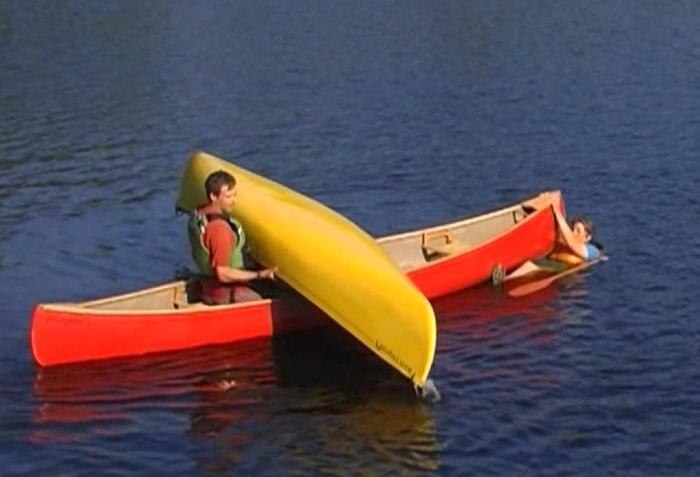Flipping a canoe is a question and even a fear in the minds of every first-time canoeist. Yet, after a while, when they realize how stable most canoes are, that concern usually leaves the paddler’s consciousness. Of course, this is viewed as a good thing, and yet, this out-of-sight/out-of-mind mentality can prevent regular canoeists from taking the steps necessary to know what to do in case of an emergency.
Take flipping a canoe for instance. Most paddlers have never practiced capsizing a canoe in deep water and getting it flipped back over, bailed out, and getting back into it. This should be rehearsed both with and without help for anyone who considers themselves a regular canoeist. Here are instructions on how to get back into a capsized canoe with the help of another canoe.
Note: For the sake of these instructions the word “canoeist” refers to the person in the canoe helping who has come to aid the person who flipped. The term “swimmer” will refer to the person whose canoe is flipped over and who is the one trying to get back into their canoe.
- This procedure assumes the capsized canoe has already been flipped back over by another canoeist and that the swimmer in the water is safely standing by to reenter the canoe.
- Once the canoeist has used the canoe-over-canoe or T-rescue to empty the swamped canoe they should maintain control and contact with the empty canoe.
- The canoeist should position the empty canoe alongside his or her own canoe and twist to hold onto the nearest gunwale with both hands which should be about shoulder apart. The idea is to apply pressure and support the canoe from tipping as the swimmer climbs in
- The swimmer should swim around from the front of the canoes to the far side of their own canoe, obviously opposite the side being held by the canoeist.
- The swimmer will then reach over the gunwales of the canoe and grab onto the portage yoke and a thwart that are toward the center of the canoe. If a particular canoe isn’t outfitted in such a way to allow this, the swimmer will have to improvise. The idea is to grab a part of the canoe that is as far over the canoe as the swimmer can reach. Just grabbing the side of the canoe and trying to climb in isn’t going to cut it.
- The swimmer will now simultaneously pull him or herself up with the arms while producing a large kick or kicks with the feet. The goal is to get more of the torso over the top of the canoe as the swimmer can. It is important to stay as low as possible throughout this. Of course, the canoeist is continuing to support the canoe from flipping as the swimmer is applying much pressure on the other side of the canoe.
- With the swimmer’s chest now on top of the canoe, he or she will now rotate their legs behind their body and into the canoe. This can be done at the same time or in one fluid motion as the previous step.
- The swimmer, now lying over the top of the canoe, will put their knees down in the canoe behind them and begin to move back into position gently while the rescuing canoeist continues to stabilize the canoe.
- The rescued swimmer should be sure to get completely situated and comfortable in the canoe with their gear where it needs to be before the rescuer lets go of or leaves the canoe.
And that’s how to climb back into a canoe in deep water with the help of another canoe and canoeist in the area.

